- What Makes a Social Campaign Culturally Relevant?
- Beyond Translation: Local Insight is Everything
- Timing and Tone for Social Media Marketing Campaigns in MENA
- Visual and Messaging Sensitivities You Should Know
- Remeber the “placement” must respects the viewer’s journey
- Platform Preferences by Country and Demographic
- UAE
- Saudi Arabia (KSA)
- Egypt
- Key Demographic Insights
- What MENA-native looks like in practice
- Keys to Successful FMCG Social Media Marketing Campaigns on TikTok and Instagram
- TikTok in MENA: Speed + Sound + Local Flavor
- What Works
- Engagement Metrics that Matter in the Region
- Beyond Likes: What MENA Brands Should Track
- Metrics That Signal Cultural Resonance
- Watch Outs
- Social Media Campaigns Impact on FMCG Brands
- Talabat + InstaShop: A Growing FMCG Ad Ecosystem
- Social Campaigns & FMCG Impact (Inferred Potential)
- Why Talabat Matters for FMCG Social Campaigns
- How Lamana Delivers Regionally Tuned Social Strategies
- Our Approach for Social Media Marketing Campaigns in MENA
- 1. Data-Driven Content Planning
- 2. Real-Time Campaign Adjustment
- 3. Targeted Influencer Matchmaking
- Key Differentiators
- Results
- Social Media Marketing in MENA Is a Cultural Conversation
Global playbooks often miss the mark in the Middle East, mainly because consumers are not passive. They interact with content that reflects their culture, values, and everyday experiences. A generic campaign might get seen, but it won’t spark a connection.
To win the region’s scroll, you have to win the heart, and that means going cultural, not just viral. This article examines how FMCG brands can move beyond the strategies that focus solely on one size to fit all, and build social media campaigns that appear personal, relevant, and local.
What Makes a Social Campaign Culturally Relevant?
Imagine it is a Ramadan evening in Riyadh. A family gathers after Iftar, scrolling through their phones. One ad makes them smile, not because it is flashy, but because it feels familiar. It mentions their traditions, shows faces like theirs, and speaks in their language. The language is not just Arabic, but the emotional language of home.
That is the power of cultural connection, which most global campaigns miss when they try to copy-and-paste strategies across regions. In the Middle East, people don’t just watch the content; they respond to what resonates with their identity.
Beyond Translation: Local Insight is Everything
Many brands assume that translating their global content into Arabic is enough for the Middle Eastern market. However, the truth is that word-for-word translation often falls short and sometimes conveys the wrong message.
What makes a difference in this region is a unique understanding of the local culture, values, sense of humor, and the way people engage with content. It is about reshaping the message so that it feels right. That is the difference between simple translation and genuine cultural connection.
- Avoid literal copy-and-paste: Translating content word for word rarely works across cultures. Languages carry different meanings, emotional tones, and cultural references. Therefore, a literal translation can sound odd or even change the meaning completely. Pepsi once translated its slogan “Generation Next” into Arabic as “العطشان جیل“ (Generation Thirsty), which unintentionally gave the phrase an entirely different meaning. As a result, it weakened the brand’s real message. Instead of merely translating, brands should rethink how to express the idea in a way that feels natural and appealing in Arabic.
- Reflect local culture and humor: Brands should work with individuals who truly understand the local culture, such as native Arabic copywriters or cultural consultants. These experts can shape content by using expressions, humor, and references that click with the audience both emotionally and socially. In other words, local insight turns content into something that is made for the audience, not just translated to them.
- Respect religion and family: People in the Middle East find content more relevant when it mirrors their lifestyle and beliefs. That means highlighting aspects such as family, hospitality, generosity, and faith. For example, a Saudi Nissan ad that used aggressive sales language, “Hurry! Limited time!”, failed during Ramadan because Ramadan is a time for reflection, family, and generosity rather than aggressive consumerism. By contrast, campaigns that focus on empathy and voluntary work, such as McDonald’s Ramadan ads in the Gulf, build trust and loyalty.
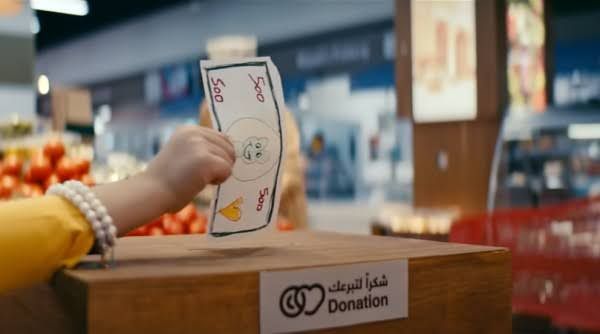
Watch the full video on YouTube
Timing and Tone for Social Media Marketing Campaigns in MENA
In the Middle East, the success of social media campaigns is often based on timing and tone. People’s online behavior follows their cultural and religious calendars. Thus, brands need to be in sync with these rhythms to connect more efficiently.
The way one brand speaks to its audience matters as much as when it posts. Humor, emotional storytelling, and respect for local culture go a long way in making messages resonate. In the following, we have explained three points to keep in mind for campaigns in the MENA region.
- Align with special occasions like Ramadan, Eid, and countries' national days across the Middle East: These events are deeply woven into the social fabric of the region. For example, weekends in most Gulf countries are Friday to Saturday, not Saturday to Sunday. Additionally, during Ramadan, people are more active on social media, as they have more free time. YouTube video views in MENA jump during the holy month, especially on comedy and cooking content. For example, BYYD explains that Ramadan 2024 was recognized by 96% of the Middle Eastern respondents as the “most anticipated season of the year.”
- Adapt tone and humor to local cultures: Humor also varies significantly from one country to another in the region. For example, popular comedy in Egypt often includes situational humor, while in Saudi Arabia, people tend to prefer lighter jokes. Using the wrong type of humor can lead to misunderstandings or even offend the audience. Therefore, brands need to tailor the tone of their advertisements to suit each specific country.
- Focus on emotional storytelling rather than hard selling: In the Middle East, advertisements with a hard-selling approach usually fail. Instead, brands with more emotional storytelling strategies are more successful. During Ramadan, ads that emphasize giving and gratitude resonate more than those highlighting discounts. These kinds of messages strike a universal chord among audiences in the Gulf, Levant, and North Africa.
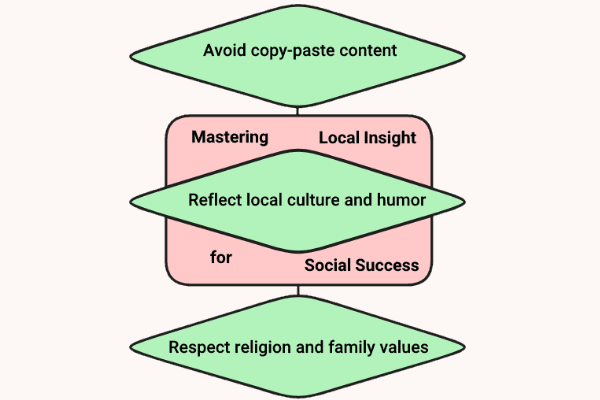
Visual and Messaging Sensitivities You Should Know
When marketing in the Middle East, it is essential to respect visual cultural norms. What you say, how you sound, and what images you use can make or break your campaign. If you want to connect effectively with audiences in this region, brands should focus on using modest visuals, clear bilingual messaging, and emotionally resonant values.
- Dress code, modesty, and gender representation: Advertisements should reflect local standards of modesty, featuring conservative clothing such as abayas or hijabs for women, and avoiding intimate or romantic scenes. Authentic representation of gender roles, such as women in leadership or men engaged in family life, is important without resorting to stereotypes.
- Arabic typography and bilingual captions: Arabic content drives higher engagement. Therefore, brands should include Arabic typography in their visuals and provide bilingual captions (in Arabic and English) to communicate with both local Arabic speakers and expatriates.
- Community, gratitude, aspiration, and unity: Campaigns should highlight themes of unity, generosity, and shared values. The Zain Ramadan 2015 campaign is a good example. Filmed in a refugee camp, it featured Arab artists interacting with homeless children, which conveys a powerful message of hope and communal strength that perfectly resonated with the region.
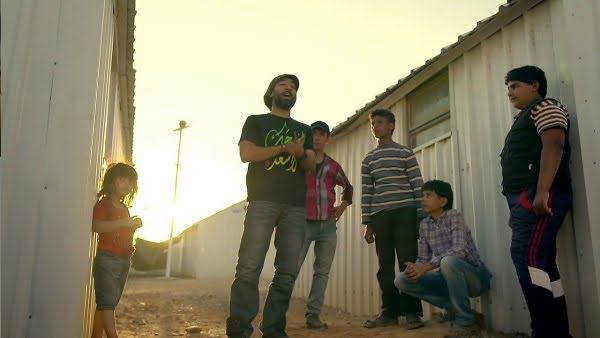
Remeber the “placement” must respects the viewer’s journey

The placement and timing of ads are crucial for effective marketing. For example, instead of interrupting shows with generic commercials, Lamana created short, cinematic mid-roll ads for the pasta brand Mana on Filmnet. These dialogue-free, mood-matching pieces seamlessly blended into peak engagement moments of popular series, making them feel like a natural part of the viewing experience rather than an intrusion.
For Namava’s El Clasico, Lamana employed a similar strategy by producing four 7-second "openers" that matched the show's mafia aesthetic. These openers aired before 19 episodes, maintaining a family-friendly tone while enhancing brand recall without disrupting viewer immersion.
Platform Preferences by Country and Demographic
Understanding what people in each country like and use on social media is really important for FMCG brands that want to succeed in the Middle East and North Africa. AUN Digital revealed that almost everyone in the UAE uses social media, with nearly 100% penetration. Saudi Arabia is also among the top countries globally in social media marketing.
Each country has its favorite apps, unique content styles, and a different mix of languages. Next, we’ll look at insights for the UAE, Saudi Arabia, and Egypt, followed by how different age and social groups use social media.
UAE
In the UAE, Instagram and TikTok see the highest levels of user engagement. According to a report by AUN Digital, Instagram has over 5 million users and is considered a major platform for shopping and social commerce. TikTok even reached more than 100% of the adult population in 2024, which suggests that many people have more than one account. YouTube also stands out with the widest reach among all platforms.
The same article also mentions that among young Emiratis and foreign residents aged 18 to 24, Instagram, TikTok, and even Snapchat are all heavily used.
- Influencers and visual content: UAE consumers are strongly influenced by social media personalities. WordBank notes that over 70% of the residents follow influencer accounts, and 63% have purchased a product based on an influencer’s recommendation. In practice, aspirational visuals, such as lifestyle imagery and product photos, often get good results. Social campaigns that are story-driven, like Instagram shoppable posts or TikTok product reviews, are also reported to be highly effective.
- Language mix: WordBank also reported that about 75% of social media users in the UAE are foreigners. So the content often mixes English and Arabic. For example, English posts on UAE Facebook appear roughly four times more than Arabic ones. However, Arabic remains more important for locals, with many young people engaging with Arabic content on TikTok and Instagram. Successful campaigns in the UAE typically include both languages, or at least English captions that connect with a diverse audience.
- Engagement style: According to the Meltwater article, both Emiratis and foreigners in the UAE enjoy visual storytelling. Simple static text ads often don’t work well. Short-form videos, such as Instagram Reels and TikTok clips, get higher reach. The key to success is keeping content dynamic and story-driven, with examples like behind-the-scenes looks or day-in-the-life videos.
Saudi Arabia (KSA)
Social media marketing in Saudi Arabia is largely shaped by a young, Arabic-speaking population. Snapchat and TikTok are especially popular. Meltwater notes that Snapchat reaches about 67% of Saudis, and Twitter (now known as X) covers over 58%. 99% of Saudis use social media, and around 63% of the population is under 30, making Saudi Arabia one of the countries with the youngest national demographics in the world.
- Top Platforms: According to an article by Sprinklr, Snapchat and TikTok are essential platforms in Saudi Arabia, and many young teenagers and adults use them every day. Instagram is also very popular, boasting around 25 million active accounts. Twitter remains popular as well, with almost 141.1 million users, mainly due to local interest in news and celebrity culture. Data on time spent shows that Saudis spend significantly more hours each month on TikTok and YouTube than on Instagram or Twitter.
- Language and content: As noted in the Sprinklr article, unlike the UAE, Arabic is by far the dominant language on social media in Saudi Arabia. Most users engage primarily in Arabic, and marketers emphasize that campaigns must be in Arabic, preferably using local dialects, to connect truly. Content that feels authentically “Saudi”, using local expressions and cultural references, tends to perform much better. Discreet and personal content formats, like Snapchat’s private story feature, also align with local cultural norms.
- Youth-driven Tone: Social media marketing in Saudi Arabia is primarily shaped for a young audience, which means it is often lively, fun, and full of trendy themes, such as TikTok challenges, rising youth music stars, or celebratory posts tied to national events. Brands frequently lean into fast-paced videos and local humor to connect. According to statistics published on the Sprinklr website, about 95% of internet users in Saudi Arabia are on social media, and 44% of them are between 18 and 24 years old.
Egypt
In Egypt, Facebook is still the most popular platform. More than 85% of Egyptians say they use it. Instagram and TikTok come next, with roughly 54% and 46% usage, respectively. YouTube also has a massive reach. DataReportal indicates that according to Google’s data, around 50.7 million adults in Egypt use YouTube, which is about 43% of the country’s total population.
- Platform mix: Facebook should be the top priority for campaigns due to its broad reach in Egypt. TikTok and Instagram Reels are great choices for those who want to connect with younger audiences. YouTube works exceptionally well for storytelling and explainer content. On the other hand, Twitter remains relatively niche; only about 3% of people use it, as noted by Daily News. Therefore, it is less important for day-to-day engagement.
- Humor and memes: Humor plays a significant role in Egyptian media. Memes are like a second language, used daily for fun, politics, and social commentary. Brands that tap into local jokes, pop culture references, and keep a playful, self-aware tone often go viral faster than formal campaigns.
- Local style: Egyptians prefer a conversational, relevant tone. Ads or posts are most effective when they feel like a trusted friend or a funny family member is speaking. A well-known article from Egyptian Street highlights this meme-based marketing trend, pointing to Toteally Relatable as a standard example. The brand uses phrases like “Strong Independent Zeft,” "Emotional Baggage,” and “petition to work from home again” printed on tote bags and laptop sleeves, which are funny, authentic, and culturally in-sync.
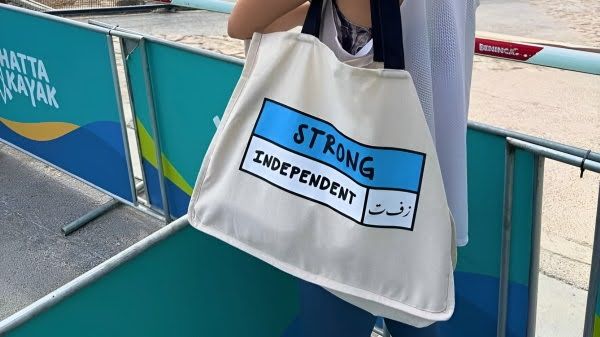
Key Demographic Insights
Understanding your audience can build impactful campaigns. In the MENA region, different age groups interact with content in unique ways. Tailoring your message to their values and preferences helps create deeper engagement and brand loyalty.
- Gen Z (born ~1997–2012): prefers authentic, raw videos. Polished ads often seem fake to them. They favor short, unfiltered content like TikTok and Reels, following micro-influencers and real personalities. Brands should use simple, natural videos to earn their trust.
- Millennials (born ~1981–1996): They value purpose and support socially committed, local brands. They love uplifting stories and content that focuses on family. They are tech-savvy and engage with interactive formats such as polls and Q&As. Video is king, especially mobile-friendly videos. For example, Capillary reports that Saudi Arabia alone generates 90 million YouTube views per day, mainly on mobile.
- Families (parents and homeworkers): For MENA families, social media marketing is like a third parent. Parents love practical content, such as quick recipes, parenting tips, DIY hacks, and educational ideas for kids. Short and helpful videos, like “whipping up healthy meals”, are highly shareable and have good results.
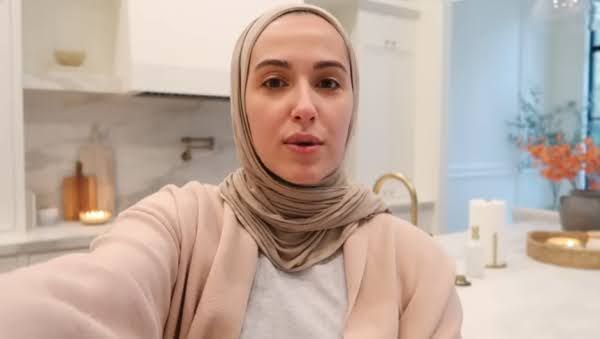
Watch the full video on YouTube
What MENA-native looks like in practice
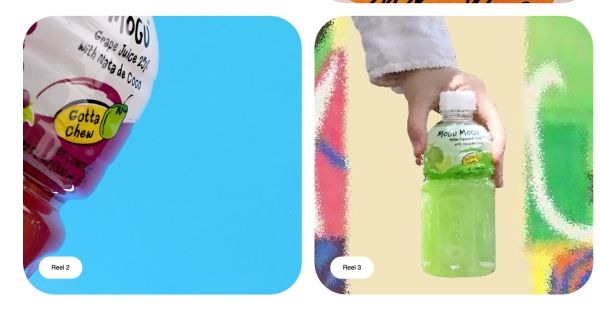
For creator-heavy markets like the MENA, Lamana structured Mogu Mogu’s FMCG rollout to pair aspiration with utility: creator reels to spark desire, practical cues (where to find it, how to verify authenticity, which flavor variants) to remove friction, and fully bilingual assets throughout. Pre-roll supplied efficient reach at scale, while a skim-friendly landing page converted curiosity into confident consideration. The connective tissue was consistent art direction and one simple insight: audiences don’t just want to be entertained. they want to be sure they’re buying the right thing.
Keys to Successful FMCG Social Media Marketing Campaigns on TikTok and Instagram
Success often comes from working with local influencers who show the product in real life, such as cooking, skincare, or fashion. Campaigns that reflect Arab culture and use familiar sounds or creators perform best, particularly with younger users.
Next, we will look at two examples that show how brands engage Middle Eastern audiences by leveraging the unique strengths of each platform.
TikTok in MENA: Speed + Sound + Local Flavor
TikTok content in MENA needs to be quick, catchy, and culturally relevant. Audiences scroll fast, so brands hook viewers in the first few seconds and keep videos short. Using popular Arabic music and viral challenges helps brands feel part of the local conversation.
Popular Arabic soundtracks and hashtag challenges are essential to spark viral engagement. A popular TikTok video for Ramadan features a quick recipe for tamarind juice set to a catchy Arabic song. The short, engaging clip shows simple steps to make this refreshing drink, and users have widely shared it during the festive season.
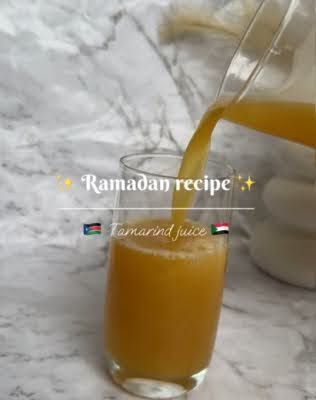
Watch the full video on TikTok
On Instagram in MENA, polished visuals and aspirational lifestyles work best, especially for beauty, food, and drink brands. People engage with influencer “routine” videos that feel personal and real, like a morning skincare routine or cooking clip.
Reels are booming. Repurpose TikTok-style content with Arabic and English text overlays to reach both local and expat viewers. Using trending music, regional idioms, and dual-language hashtags results in better reach.
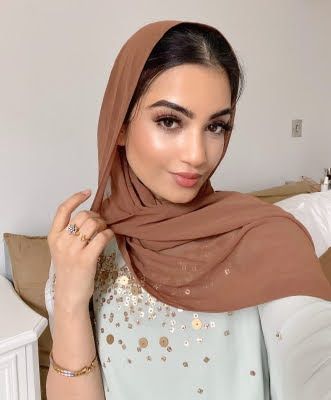
What Works
Authentic stories, short videos, local humor, and creator collaborations drive strong engagement in MENA. FMCG brands that tap into trends, Arabic sounds, and community voices see the best results.
Hashtag challenges and duets: Hashtag challenges and duets turn viewers into creators. FMCG brands can invite users to remix a recipe, dance, or duet with a popular video. This sparks user-generated content and viral reach. TikTok notes that its hashtag challenges average 17% engagement. Instagram’s Remix offers a similar co-creation tool.
Arabic hashtags and local memes: To stand out in MENA feeds, region-specific hashtags and meme format perform well. Popular Arabic hashtags (e.g. رمضان#) and local slang tags help the algorithms target relevant users. Aligning humor, filters, and sounds with local culture makes content feel relatable and boosts engagement.
Creator collaboration over one-way ads: In MENA, people connect more with real, polished ads. They trust influencers who share everyday life, such as family moments or local recipes, over celebrity promos. Top FMCG brands let creators use products naturally in their own style, instead of handing them stiff scripts. That’s why many now work with multiple micro-influencers to keep content personal and community-based.
Engagement Metrics that Matter in the Region
In MENA, engagement is not just about likes or clicks; it is about meaningful interaction. Metrics like video watch time, shares, comments, and story views often reveal how well content resonates with the audience. FMCG brands should focus on these deeper signals to understand their impact, rather than just counting surface-level numbers in social media marketing.
Beyond Likes: What MENA Brands Should Track
In MENA, likes aren’t enough. FMCG brands should focus on deeper actions like comments, shares, and saves. These show real trust. A share is a public vote of confidence; a save means the content was worth revisiting. Brands should track what signals genuine interest.
The following covers key metrics that matter in the region.
- Saves and Shares: When followers save a post, they are bookmarking it for later. Ignition analysis explains that saved posts “are a powerful endorsement”. They mean users want to revisit your content, building trust and loyalty.
- Story interactions: Interactive Instagram Story features like polls, Q&As, and emoji sliders create two-way engagement. Brands can use audience responses to measure interest and see what people really think. High participation means your content is hitting the mark. These interactions build dialogue, showing more than just a quick glance. They reveal genuine audience feedback.
- Video/Reels view-through rate: It is not just about views. What matters is how long people stay. Sprout Social emphasizes that completion rate is key. A high completion rate, like 95-100%, means your video is actually engaging. In MENA, where short videos dominate, strong view-through shows your content resonates. If viewers drop off early, it is a sign you missed the mark. If they stay, you nailed it.
- Influencer engagement-to-follower ratio: Do not just focus on followers when choosing influencers. Look at their engagement rate: likes and comments per follower. Micro-influencers often connect with their audience and build trust. In MENA, brands still favor big names, but smaller influencers can drive more meaningful engagement with local communities.
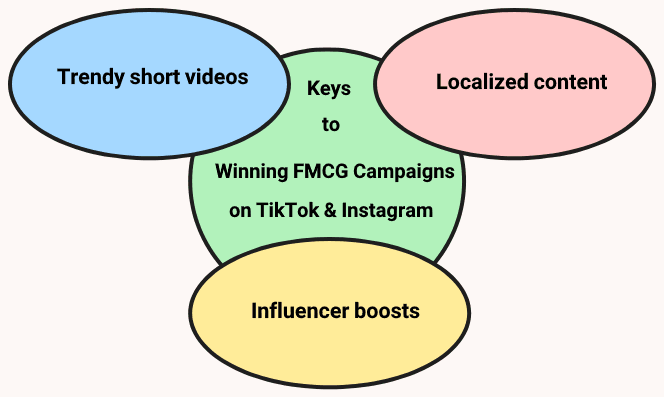
Metrics That Signal Cultural Resonance
A recent study shows that 71.8% of MENA brands partner with mid- or mega-influencers, while globally, only 44% prefer micro-influencers. Influencer Marketing Hub points to an overlooked opportunity for smaller creators in the region. Cultural values are often reflected in user behavior. MENA brands should watch for engagement signals tied to local language, traditions, and community.
- Surge in Arabic UGC/Hashtags: A rise in user-generated content (UGC) tagging your brand with Arabic keywords or hashtags is a strong cultural signal. According to Faster Capital, tracking relevant hashtags across social media provides insights into conversations. For example, if followers start sharing photos or videos using your branded Arabic hashtag (e.g. تهمنا_صحتك#), it means the message is hitting home.
- Increased DMs or WhatsApp Chats: Private messages like Instagram DMs and WhatsApp are essential signs of deeper engagement. More messages usually mean stronger trust and interest. Chat Architect mentions that since 80% of WhatsApp users expect replies within 10 minutes, fast responses are crucial. In the MENA region, where WhatsApp is widely used, higher DM or chat volumes reveal real brand connection, even if public statistics don’t show it.
- Micro-Influencer Community Engagement: In MENA, focusing only on big influencers misses the real trust and connection that smaller creators build. That’s why brands prefer micro- and nano-influencers now. If a campaign sparks strong engagement in small but targeted groups, that’s a better sign of impact than total impressions alone.
Watch Outs
According to marketing experts, chasing large numbers of viewers without ensuring that your content is relevant can backfire. Consumers value relevance over sheer reach. A post that goes viral but misses the right audience does little to build genuine brand loyalty. For brands in the MENA region, it is better to focus on targeted resonance rather than trying to reach everyone. In other words, a smaller, well-matched audience beats a huge but irrelevant one.
A low click-through rate (CTR) isn’t always a bad sign, especially if your goal is brand awareness or emotional connection. Awareness campaigns aim to maximize exposure, not immediate clicks. Medium reveals that “your awareness campaign SHOULD have a low CTR.”
If you are focusing on brand love or recall rather than driving traffic, a low CTR means people saw your message but weren’t expected to take action right away. Instead, pay attention to other success signals like increased ad recall, positive sentiment, or more brand searches.
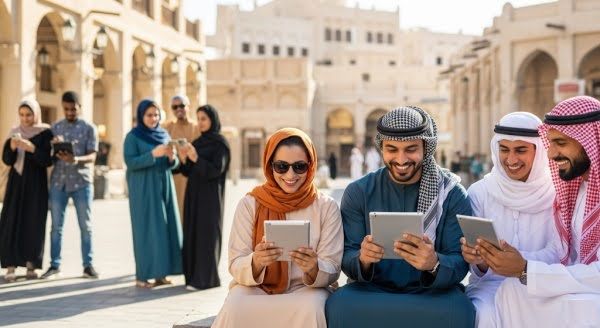
Social Media Campaigns Impact on FMCG Brands
FMCG brands in the Middle East are increasingly leveraging social media campaigns run on major e‑commerce and delivery platforms—especially Talabat (including its recently integrated InstaShop ecosystem)—to boost brand visibility, drive engagement, and significantly impact conversion metrics.
Talabat + InstaShop: A Growing FMCG Ad Ecosystem
In March 2025, Talabat Holding plc announced its acquisition of InstaShop, the leading online grocery delivery platform in MENA. InstaShop generated a GMV of USD 631 million in 2024, a 16% increase from 2023, accounting for approximately 8% of Talabat’s total GM.
This acquisition expanded Talabat’s Grocery & Retail (G&R) vertical, giving FMCG brands access to a larger audience via both app-based grocery delivery and social engagement channels.
Moreover, Talabat’s total GMV for 2024 reached USD 7.4 billion, with the G&R vertical growing 47% year-over-year to USD 1.9 billion. This indicates a rapidly expanding ad inventory and marketing opportunity targeting FMCG consumers.
Social Campaigns & FMCG Impact (Inferred Potential)
Although specific social media campaign metrics from Carrefour, Lulu, or Spinneys are not publicly disclosed, Talabat’s integrated platform provides a strong case for FMCG brands running measurable social campaigns:
- Through Talabat’s social media—Twitter/X, Instagram, or co-branded influencer content—FMCG brands can leverage platforms that already serve over six million active customers, 65,000 partners, and 119,000 riders across eight countries in the MENA region.
- Talabat’s IPO filings and post-IPO reports emphasize the growth of awareness and engagement in the G&R verticals, which logically supports lower acquisition costs and higher conversion rates when social campaigns drive app engagement.
Although direct campaign ROAS for FMCG brands isn’t publicly released, the scale and growth of Talabat’s Grocery & Retail ecosystem offer a compelling case: brands advertising via Talabat’s social channels reach a large, intent-rich grocery shopper base within a trusted app environment.
Why Talabat Matters for FMCG Social Campaigns
- Mass Audience with Purchase Intent: Talabat’s large active user base is already engaged in grocery shopping behavior, making social touchpoints highly relevant.
- Rapidly Growing Grocery Vertical: With G&R GMV up 47% in 2024, social ads tied to this segment tap into accelerating consumer demand.
- Platform Trust & Preference: Talabat is one of the MENA region’s most recognized delivery platforms, enhancing credibility for co-branded FMCG messaging.
- Cross-channel Synergy: Campaigns can integrate across social, app, and in-app notifications—amplifying reach and conversion potential.
How Lamana Delivers Regionally Tuned Social Strategies
Lamana combines in-depth cultural understanding with real-time data to craft social media campaigns that genuinely resonate with local audiences. Their AI-powered strategy enables FMCG brands to deliver content tailored to the language, trends, and preferences of Arabic and Persian markets.
Our Approach for Social Media Marketing Campaigns in MENA
Lamana agency customizes its social media marketing campaigns in MENA by combining deep cultural knowledge with data and technology, focusing on three main strategies.
1. Data-Driven Content Planning
Lamana uses a mix of cultural insight and real-time data to create content that truly speaks to local audiences. This ensures campaigns are relevant and tailored to the unique preferences of Arabic and Persian markets by:
- Combining deep cultural knowledge with real-time social platform data
- Using AI tools to analyze behavior in Arabic- and Persian-speaking markets
- Creating content calendars tailored to local trends and dialects
- Helping smaller brands connect with Arab or Persian audiences
2. Real-Time Campaign Adjustment
By actively monitoring cultural events and trending topics, Lamana can quickly adapt campaigns to stay fresh and meaningful. This flexibility helps brands connect better with their audience during important moments like holidays or viral trends.
3. Targeted Influencer Matchmaking
Rather than just working with big-name influencers, Lamana carefully pairs FMCG brands with smaller, local influencers who truly reflect the brand’s values and audience. This targeted approach boosts engagement and delivers stronger results.
Key Differentiators
Lamana agency creates culturally tailored content in Arabic, English, and sometimes Persian. They ensure campaigns fit local cultures and connect online social media with real-world shopping to drive engagement and sales.
- Bilingual Creative Production: Lamana creates content tailored to Arabic, English, and sometimes Persian, working with local artists and influencers to capture the right tone and cultural feel for each audience.
- Cultural Advisory Pre-Launch: Lamana reviews campaigns with Arab and Iranian team members to ensure cultural fit, avoiding mistakes while keeping content bold and respectful.
- Integration with Offline/Phygital Activations: Lamana links campaigns to real-world shopping using AR try-ons and in-store digital displays, turning online engagement into visits and sales.
Results
- Creator-led, landing-page assisted (Beverage): broad-reach awareness with 80+ creators across mother-and-child, lifestyle, and Gen Z segments; a bilingual “authentic vs. counterfeit” explainer converted curiosity into informed trial at scale.
Project page: Mogu Mogu Iran Campaign
- Influencer-first brand media (Saffron): multi-vertical creators plus brand-owned channels delivered sizable reach and engagements without hard selling, reinforcing heritage through modern formats.
Project page: When Saffron Built Its Own Media
- OOH x Digital consistency (Pasta): a six-month metro takeover synchronized with online creative (“Anyone Can Be a Chef”) for unmistakable brand presence, everyday visibility turned into cultural familiarity.
Project page: When Subway Stations Took on the Flavor of Mana
Social Media Marketing in MENA Is a Cultural Conversation
The most effective FMCG campaigns in the region don’t simply appear in feeds; they engage with local culture, language, and values. They speak with the region, not at it.
Lamana enables brands to connect meaningfully, fostering loyalty and long-term consumer relationships, rather than just achieving quick conversions. We understand social media marketing in MENA is not just about visibility. It is about cultural fluency. We help brands move from surface-level messaging to meaningful connections, where audiences feel seen and inspired to engage.
If you are looking to build social strategies that truly connect, go beyond the algorithm. Build campaigns with Lamana that reflect the heart of the region, and build loyalty that endures.
